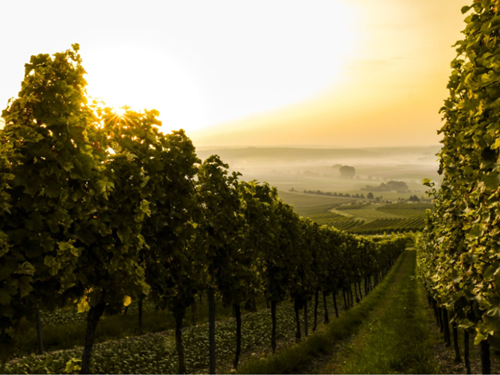Terroir: Photo by Sven Wilhelm on Unsplash
Celebrated for its complex flavors and aromas, wine is a product of nature’s intricate dance with the elements. While your favorite winemakers may use the best grape harvester parts in Australia or apply ancient techniques to age their wines in Italy, there’s only so much these human interventions can do. The most powerful player in shaping a wine’s character will always be the terroir.
Terroir refers to the combination of environmental factors that influence grape cultivation, and it plays a pivotal role in defining the character and nuances of wine. Among these factors, climate stands tall as a primary influencer. Let’s delve into the ways climate, a cornerstone of terroir, shapes the distinct flavors and aromas of wine.
 Photo by Kelsey Knight on Unsplash
Photo by Kelsey Knight on Unsplash
Table of Contents
1. Temperature affects ripeness and acidity
Climate significantly affects temperature, a critical factor in grape ripening. Warmer climates generally yield riper grapes with higher sugar content, contributing to fuller-bodied wines with higher alcohol levels. Conversely, cooler climates lead to slower ripening, preserving acidity and resulting in wines that are more delicate and vibrant. For instance, cool-climate regions like Burgundy, France, often produce wines with pronounced acidity, while warmer regions like California’s Napa Valley deliver fruit-forward, robust drops.
2. Sunlight nurtures flavor and complexity
Sunlight exposure shapes the development of grape flavors. Intense sunlight, prevalent in warmer climates, encourages the synthesis of compounds like anthocyanins (responsible for color) and phenolics (impacting tannins). This abundance of sunlight can result in richer, bolder wines with deeper colors. On the other hand, cooler climates with limited sunlight produce grapes that develop more slowly, leading to wines with lighter pigmentation, subtler flavors, and increased complexity.
3. Rainfall supports grape health
Rainfall and water availability significantly impact grape growth and health. While adequate water is essential for vine growth, excessive rainfall can dilute flavors and lead to grapes with lower sugar concentrations. Regions with moderate rainfall or well-regulated irrigation systems often produce grapes of balanced composition, contributing to wines with harmonious flavors. Mediterranean climates, like those found in Spain’s Priorat region, offer the perfect balance of rainfall and dry periods, nurturing grapevines and delivering concentrated, flavorful wines.
4. Altitude influences elegance and complexity
Elevation plays a pivotal role in shaping wine profiles. Higher-altitude vineyards, such as those in Argentina’s Mendoza region, experience cooler temperatures even though the local climate is warmer at lower elevations. This temperature variation leads to slower grape ripening, preserving acidity and resulting in fresher, more elegant wines that exhibit a greater complexity of flavors. Wines from higher altitudes often showcase vibrant acidity, floral notes, and minerality due to the stress imposed on the grapevines by the altitude.
5. Microclimates create uniqueness
Microclimates within larger wine regions introduce localized variations in temperature, humidity, and sunlight exposure. These subtle differences can profoundly impact grape development and, consequently, the resulting wine’s flavors and aromas. Vineyards located near rivers, slopes, or valleys might experience variations in soil composition or air circulation, crafting wines with unique characteristics. Winemakers keenly observe and leverage these microclimates to create distinctive wines that reflect the nuances of their specific terroir.
Understanding how climate influences grape growth and development gives you insight into the immense diversity of wines worldwide. Each sip becomes a journey through landscapes, temperatures, and sunlit days, encapsulating the essence of the region where the grapes were nurtured. As you learn to appreciate the impact of climate on wine, you’ll find that your tasting experiences are elevated. You’ll soon be better able to discern the subtle influences that shape each bottle. From sun-kissed valleys to windswept hillsides, the story of wine is intricately woven with nature’s elements, showcasing the mesmerizing tapestry of terroir.

